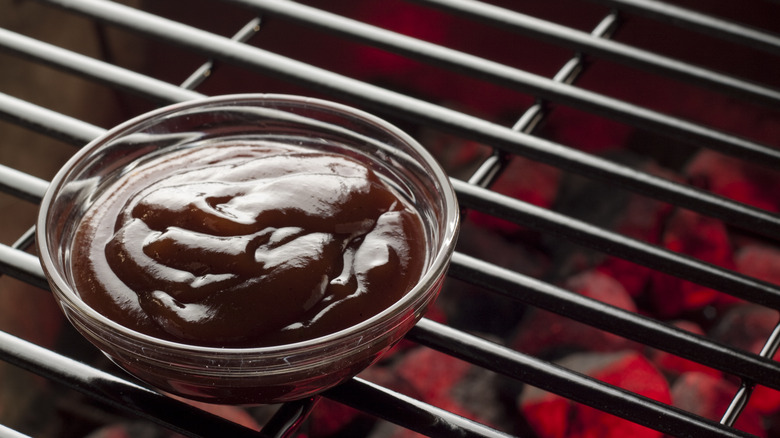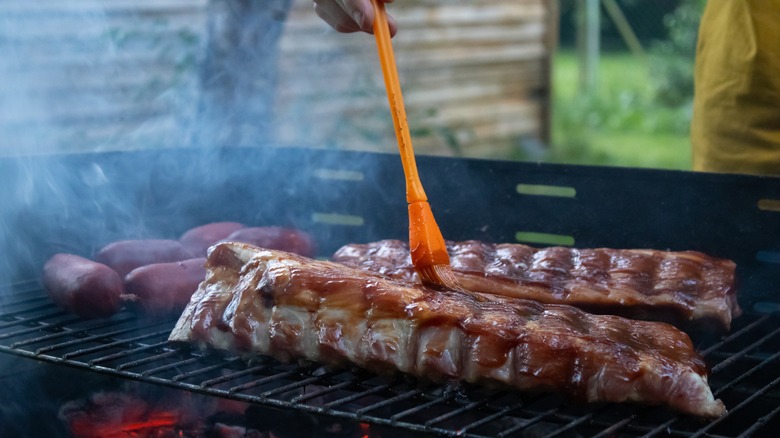Barbecue Sauce Used To Look A Lot Different
The history of barbecue is as rich as a plate of burnt ends smothered in sweet, sticky sauce. It's a history that parallels the story of the Americas themselves, beginning with indigenous cuisine, changing through the forces of colonialism and war, and ultimately ending with an incredibly diverse array of regional barbecue sauces across the U.S. Unfortunately, many of these regional sauce styles are exclusive to their homes, which are concentrated almost entirely in the American South, a region between the Carolinas and Texas and up to Missouri known as the barbecue belt. For most of us living outside the belt, our idea of barbecue sauce is very limited — it's sweet, sticky, and brown. This is somewhat strange, as none of those adjectives could be said about the original version of barbecue sauce.
The history of barbecue begins on the Caribbean island of Hispaniola, where Christopher Columbus observed the native Taíno people cooking meat over indirect heat (using indirect heat is what makes the difference between barbecuing and grilling). Two centuries later, Dominican missionary Père Labat wrote of cooks on the island seasoning their meat with lime juice and chili peppers, a practice that may have been adopted from African-born enslaved peoples. This is the earliest form of barbecue sauce that we know of. It sounds like a far cry from the stuff you slather on ribs today, but the truth is that throughout most of history and throughout most regional barbecue styles, it was acidic ingredients at the forefront, not sweet or smoky ones.
How barbecue sauce evolved around the country
Lime juice and pepper marked the beginning of a sauce on barbecue. Eventually, the practice spread to the Southern United States, but there was an issue. Limes were not readily available in the South, so people began using vinegar instead. By the mid-1800s, people were using a combination of butter, vinegar, and pepper on barbecue. The sauce was basted onto the meat as it cooked, with leftovers served like a condiment. Up to this point in history, American barbecue wasn't split into regions, with everyone using more or less the same style. That all changed after the Civil War, and by the dawn of the 20th century, the world of barbecue sauce was as diverse as America itself.
Some regional styles of barbecue sauce stay close to the original, acid-forward versions. Most notable among these is North Carolina-style barbecue sauce, which has a thin consistency and strong vinegar kick. The thick, tomato-based style that has come to define most people's perception of barbecue sauce is actually Kansas City-style sauce, which was invented in 1908 by chef Henry Perry. Most bottled barbecue sauces lean towards a sweeter flavor, but there was a reason that the earliest versions of barbecue sauce were almost exclusively lime juice or vinegar. Acid cuts through the rich fattiness of the meat. If you don't have access to regional sauces like the North Carolina style, you should at least add vinegar to bottled barbecue sauce to bring it closer to the original.

